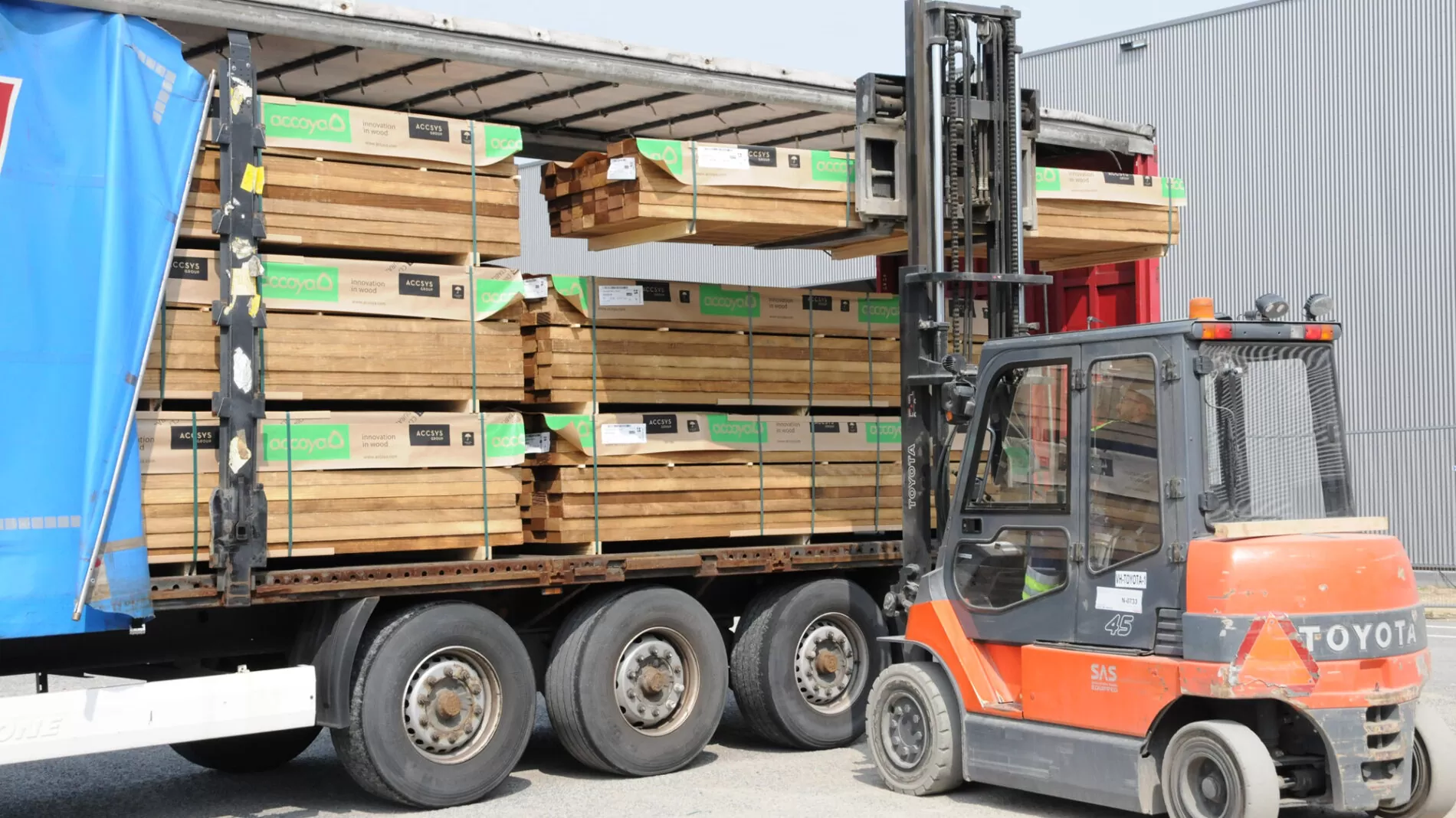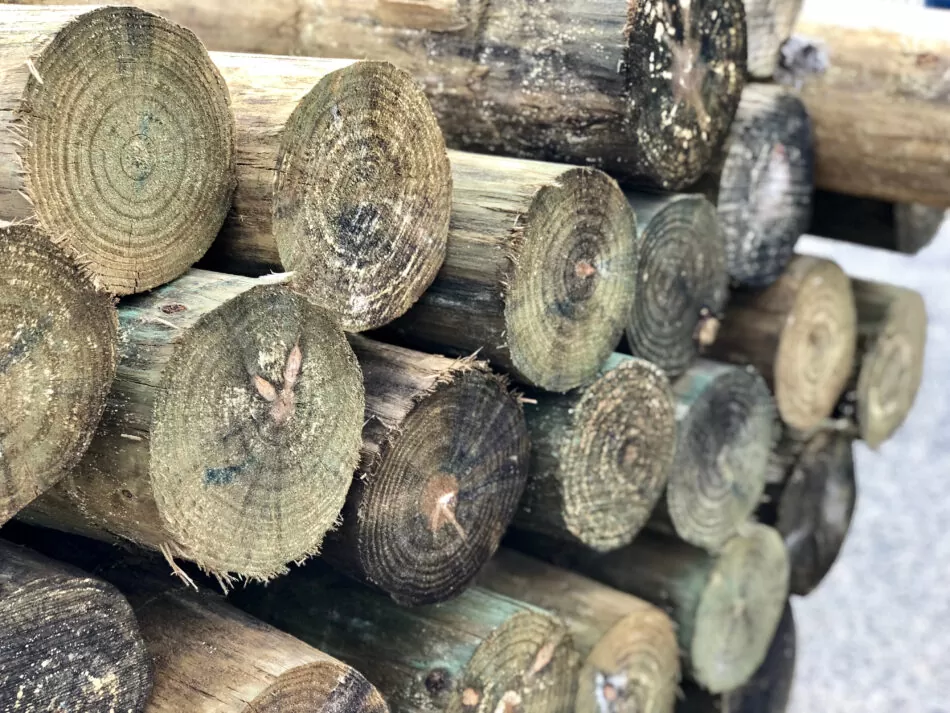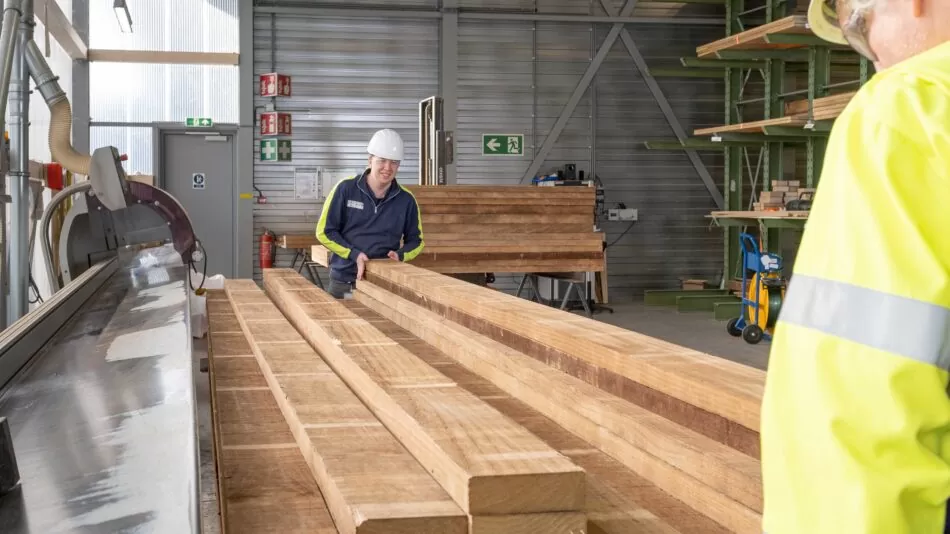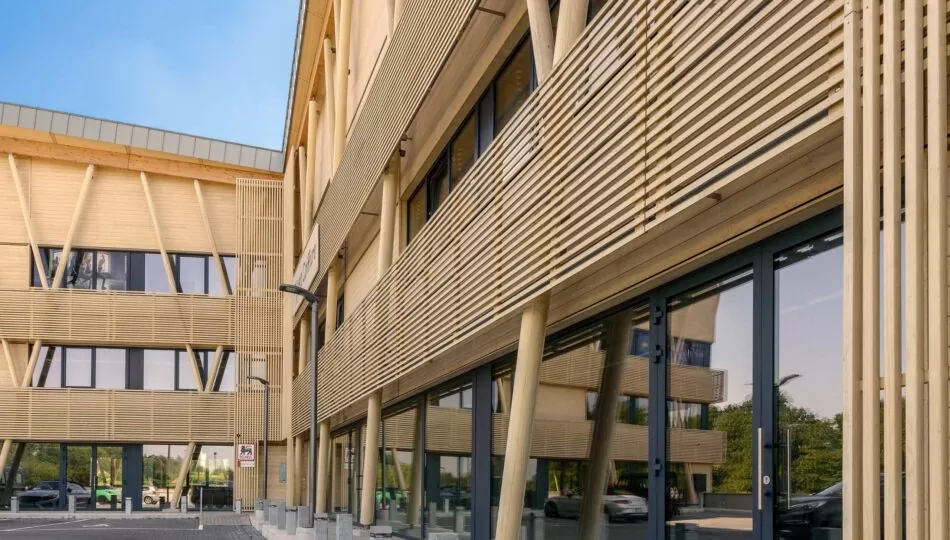
Pressure treated wood vs. modified wood – A beginner’s guide
04.21.2021
Choosing the right wood
When it comes to choosing which type of wood you need for a project, you might assume it to be quite straightforward… but making the best choice now could save a lot of time, hassle and money later.
So, what do you really know about the differences between pressure-treated wood and modified wood? What do they mean, and what are the key benefits of one over another?
Wood is something that we all know a little bit about, and sometimes that’s enough. There’s hard wood, soft wood, MDF, and they all have typical uses… but we also know that really there’s a bit more to it than that.
So, how much do we really know about the oldest building material of all, and – more importantly – how do we know what wood is actually best for a particular application?
Cost vs value
We all want the best value for our money, and sometimes that means shopping on a budget in search of value – but often at the expense of performance.
For this reason, most of us have probably heard the term “Pressure treated Wood’ as a ‘cheap’ option, and perhaps ‘modified wood’ or ‘engineered wood’ as the high performance choice… but there is more to consider than the up-front cost and more to ‘cost’ than just money.
The word ‘Treated’ suggests that something has been added to the wood to improve its performance or durability… and if you think that, you would be right.

What is pressure-treated wood?
Pressure-treated wood is normally a soft wood that has been immersed in a liquid preservative within a pressure chamber. The high pressure forces the chemical into the fiber of the wood rather than just treating the surface.
Pressure-treated wood has long suffered from a somewhat bad reputation over the years, due to the chemicals used to treat the wood. If the words ‘chromated copper arsenate’ (CCA) don’t mean anything to you, don’t worry, it doesn’t exactly roll off the tongue.
The problem is primarily to do with the last word ‘arsenate’ – derived from arsenic, probably the most famous poison EVER. ‘Leaching’ of this chemical, where it comes out from the wood, posed serious health risks both to the people handling it and the wider ecological environment with a nasty effect on animals and plants.
But there’s good news: governments around the world, having woken up to the serious dangers posed by CCA pressure-treated wood, have spent the last couple of decades largely banning its production and particularly its use in residential situations.
So, what has it been replaced with you ask?
The most widely used alternative to CCA is something called ‘Alkaline Copper Quaternary’ or ‘ACQ’. As you might expect, ACQ pressure-treated wood is safer than CCA for both humans and the environment, but sadly there is quite a trade-off when it comes to performance.
What performance can you expect from Pressure-treated wood?
Like all materials, it depends on where and what you do with them, and pressure-treated wood is no exception. The general consensus seems to be that it should last anywhere from 9-30 years (of course also depending on the level and frequency of maintenance you’re prepared to commit to).
Pressure-treated wood used for decking and exposed to freeze-thaw and wet-dry cycles often last less than 10 years even without proper care and maintenance, however, the same wood out of the elements and carefully looked after has the potential to go the full 30+ years.
Regardless of the situation and care though, you definitely won’t be offered any kind of warranty on pressure-treated wood.
What causes pressure-treated wood to rot?
The decay or rot of pressure-treated wood is sadly inevitable due in part to the way that the wood is treated. The chemicals added in the pressurized treatment vessel are only able to penetrate so far into the wood, meaning the core of the wood is still technically untreated. This is fine, until the construction process starts and you need to cut planks to the correct length. When you cut through pressure-treated wood, you leave exposed ends that are significantly more susceptible to rot.
However, the biggest issue when it comes to decay in pressure-treated wood is a simple one, and the same one that affects completely ‘raw’ wood: moisture.
Although the pressure treatment delays the onset of fungal infestation, it is water that really causes the biggest issues. You only need to put an off-cut of pressure-treated wood in a bowl of water to see it being absorbed in just a few minutes. This causes the wood to swell, and then to shrink when it dies out, which in turn can cause the wood to warp, cup, split or crack – and potentially break the structure of your finished product if the gaps between pieces of wood become large enough. All these cracks and splits allow water to penetrate deeper into the wood, accelerating the effect by preventing the wood from completely drying out, and ultimately creating the ideal conditions for decay.
Pressure-treated wood – should you go with it?
Sometimes your budget must govern your decision-making, and for people looking at a low-cost option without much care or need for assured performance, then pressure-treated wood can be a good choice.
If you only need your structure to last for a relatively short time and you’re happy to commit to regular, frequent, and careful maintenance, then pressure-treated wood certainly has appeal.
But, if you’re creating something you really want to last and enjoy for decades to come, then you might want to think about some other high-performance solutions for your deck or other garden and outdoor uses.
What is the best alternative to pressure-treated wood?
When you’re going to the effort and expense of creating a deck or siding a building, it’s important to know that it will last – you are creating it, it is yours, and you want to own and enjoy it for years (or decades!) to come.
Naturally, you also definitely don’t want to be in the position of having to pay for the materials and labor again in just a few years.

What is modified wood?
According to TRADA (The Timber Research and Development Association), ‘wood modification involves the action of a chemical, biological or physical agent upon the material, resulting in a property enhancement effective for the service life of the modified wood’.
It’s a bit of a mouthful, but essentially means that the properties of the wood are actually changed by the modification process – enhancing performance by changing the wood itself rather than just soaking or infusing it with other chemicals.
To avoid making this article as impenetrable as modified wood, we’re just going to focus on chemically modified wood, partly because it’s the most well-known, but mainly because it really shows the highest benefits and performance, putting it at the top end of modified woods you can buy.
What’s the science behind chemically modified wood?
Acetylation’ is really the most established, proven and effective form of chemical wood modification. This is where the wood is subjected to an organic reaction with acetic anhydride – essentially vinegar without the water.
The purpose of the reaction is to address a part of the cellular structure of wood called ‘free hydroxyls’. These free hydroxyl groups are what water binds to: they allow the absorption and release of water in and out of the wood, causing all the swelling and shrinking, cupping and cracking, damage and decay. The acetylation process converts these free hydroxyls into ‘acetyl groups’ which water can’t bind to – significantly reducing the ability of the wood to absorb and retain water.
All wood actually has naturally-occurring levels of acetyl groups, typically higher in hardwoods and lower in softwoods, which is one of the factors in how durable different species of wood are.
So, by boosting the acetyl levels of the wood to prevent water absorption, acetylation addresses the root cause of many of wood’s potential problems, and offers several key performance benefits including:
- dimensional stability, so your windows and doors won’t jam or get stuck, coatings will last longer, and there’s much less chance of cracks, splintering and damage from expansion and shrinking,
- incredible durability, with very high resistance to rotting, decay and even insect or termite damage
With all these benefits you might be concerned that the chemicals used in the process could be harmful or dangerous. While acetic anhydride itself is not very pleasant given it’s very low pH level, it’s only used to modify the wood – the actual finished product is completely non-toxic and is certified safe for humans, animals and the environment.

What performance can you expect from acetylated wood?
Acetylated wood is unrivalled in terms of its durability and stability, especially compared to untreated or pressure-treated wood. Accoya® acetylated wood leads the modified wood industry, and it’s the only wood in the world to offer a 50-year warranty: half a century of guaranteed peace of mind, and industry experts have even stated an expected service life of 70+ years. It even has a 25-year warranty for use in or underwater, proving its performance even in the toughest conditions.
As with all materials it will still benefit from a bit of maintenance and cleaning, but requirements are substantially reduced, and the impacts of irregular work are considerably less severe.
With these performance properties, it’s no wonder that more and more people, and expert joiners and manufacturers, are selecting Accoya as their wood of choice, for windows, doors, decking, siding, fencing and other exterior wood applications.
In summary – choose what’s right for your needs
There’s no hard and fast rule in selecting the best type of wood for your needs. As always you will need to balance cost with performance, monetary value with time, effort, ongoing costs and peace of mind.
So, before you start, remember that your choice now is one you’re making for years ahead.
Selecting pressure-treated wood could well be cheaper in the moment, but also a false economy, especially if you’re going to have to replace your construction or project a couple (or even five!) times compared to modified wood.
With enough uncertainty in our lives already, you can depend on the fact that Accoya is most durable and stable wood on the market, and if you want your project to go the distance then you need to build with the best.
For more information see www.accoya.com
Where to Buy
You can buy Accoya and Accoya products from our selection of distributors or manufacturers in your region. Use our map search tool to find your nearest Accoya supplier.
WHERE TO BUY ACCOYA
for your next projectWhat type of Product are you interested in?
- - Select product type -
-
FIND A SUPPLIER
FIND A INSTALLER
for your next projectWhat type of are you interested in? (optional)
How will your be used?
- - Select type -
-
You are currently on the Accoya site
Would you like to visit the Accoya Site to view all relevant content for your location?